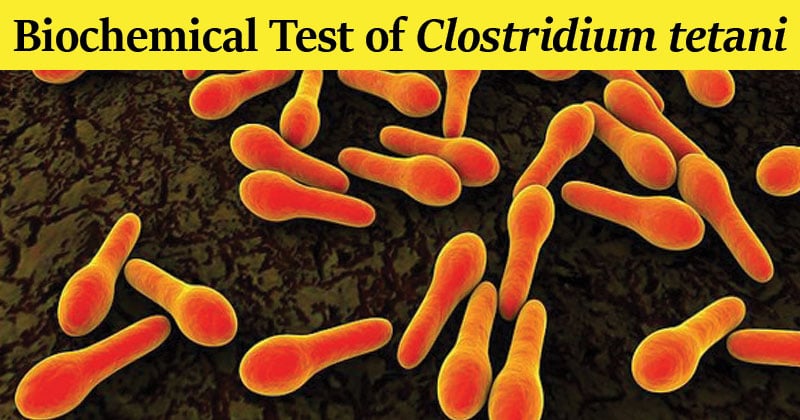
Interesting Science Videos
Some of the characteristics are as follows:
| Basic Characteristics | Properties (Clostridium tetani) |
| Capsule | Negative (-ve) |
| Catalase | Negative (-ve) |
| Flagella | Peritrichous |
| Gas | Positive (+ve) |
| Gelatin Hydrolysis | Positive (+ve) |
| Gram Staining | Gram-stain-positive, but become Gram-stain-negative after approximately 24 h incubation. |
| Growth in 20% Bile | Negative (-ve) |
| Growth in 6.5% NaCl | Negative (-ve) |
| H2S | Positive (+ve) |
| Hemolysis | Positive (+ve) |
| Indole | Variable |
| Motility | Positive (+ve) |
| Nitrate Reduction | Negative (-ve) |
| Shape | Large rods (0.5-1.7 x 2.1-18.1 µm), which may appear single, in pairs or in short chains. |
| Spore | Positive (+ve) |
Fermentation of |
|
| Arabinose | Negative (-ve) |
| Cellobiose | Negative (-ve) |
| DNase | Positive (+ve) |
| Fructose | Negative (-ve) |
| Galactose | Negative (-ve) |
| Glucose | Negative (-ve) |
| Glycogen | Negative (-ve) |
| Inositol | Negative (-ve) |
| Inulin | Negative (-ve) |
| Lactose | Negative (-ve) |
| Maltose | Negative (-ve) |
| Mannitol | Negative (-ve) |
| Mannose | Negative (-ve) |
| Raffinose | Negative (-ve) |
| Rhamnose | Negative (-ve) |
| Ribose | Negative (-ve) |
| Salicin | Negative (-ve) |
| Sorbitol | Negative (-ve) |
| Starch | Negative (-ve) |
| Sucrose | Negative (-ve) |
| Trehalose | Negative (-ve) |
| Xylose | Negative (-ve) |
Enzymatic Reactions |
|
| Esculin Hydrolysis | Negative (-ve) |
| Lecithinase | Negative (-ve) |
| Lipase | Negative (-ve) |
| Neuraminidase | Negative (-ve) |
| Superoxide dismutase | Negative (-ve) |
References
- Bergey, D H, William B. Whitman, Vos P. De, George M. Garrity, and D Jones. Bergey’s Manual of Systematic Bacteriology: Vol. 3. New York: Springer, 2009. Print.
- https://www.vetbact.org/?artid=32
- https://www.health.gov.au/internet/main/publishing.nsf/Content/cda-phlncd-tetanus.htm/$FILE/tetanus.pdf
